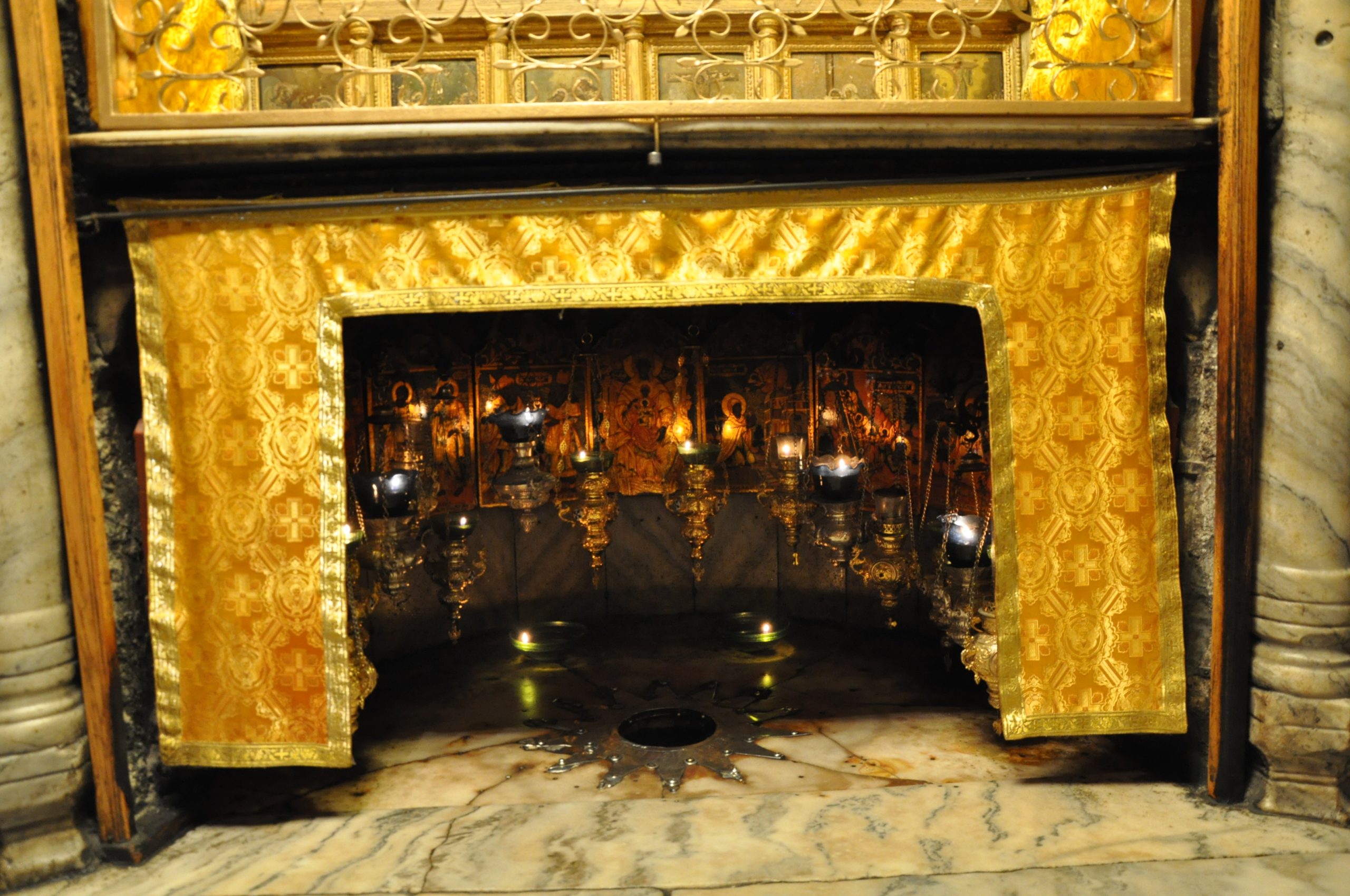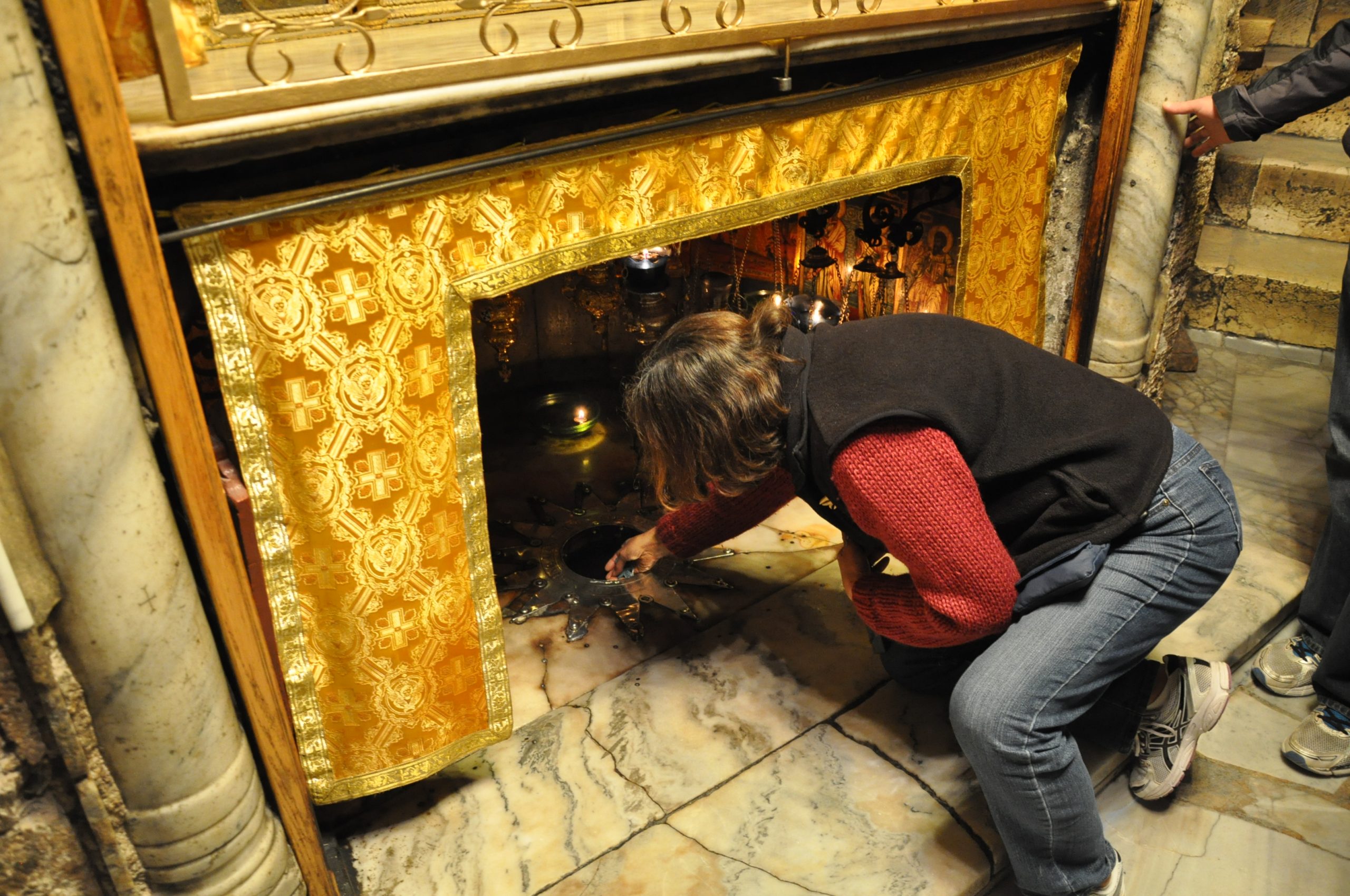
In 2015, I was blessed to go on a pilgrimage to the Holy Land. Everything I saw was new to me and filled my soul with awe—except one thing. One thing I’d never seen left me curious and confused.
At different holy sites, there would be a star on the ground with a hole in the middle. I recall seeing them in the Church of the Nativity in Bethlehem, the site of the Crucifixion in the Church of the Holy Sepulchre, and the Church of St. John in Ein Karem. There might be others I didn’t notice. Every time we came across one of these stars, a priest in our group would pull a handful of rosaries and chains with religious medals out of his backpack, kneel down, and touch them to the hole in the star.
Sometimes there wouldn’t even be a star. Like the spot where Jesus is believed to have ascended into heaven. Or the slab of stone upon which it is held that Christ’s body was anointed after his death, seen upon entering the Church of the Holy Sepulchre.
It was at that slab that I decided I had to know what the priest was doing. As he tucked the rosaries and medals back into his backpack, I asked him about this ritual. “I’m making third class relics for my friends and family,” he answered. “They can’t be here, so I had them give me something to touch to the holy sites so they can share in the grace of the pilgrimage. And I pray for their intentions at the same time, so it’s like a double grace.”
For those not familiar with the Catholic concept of relics, let me explain. There are three classes of relics: first class—a part of a saint such as bone or hair, or items involved in Christ’s Passion; second class—something a saint owned like clothing or a prayer book; and third class—an item touched to a first- or second-class relic.
Relics are not worshiped, and we don’t believe relics are “magical” means of miracles. Instead, relics are venerated—held in high regard and respect as an outward sign and reminder of God’s grace. As an Aug. 1, 2016, Aleteia article notes, “God uses these material objects to impart special graces to faithful souls. They are never to be worshiped and are meant to lead us to the ultimate worship of the one God.”
Third class relics can be made at shrines and burial sites of saints throughout the world. But the Holy Land is unique in that there are so many authentic holy sites involving the life of Christ in such a relatively small, concentrated area—the only place on the planet where Our Lord physically lived and died.
Moved by the words the priest said, I purchased a few rosaries and a necklace to make third class relics at authentic holy sites, saying special prayers for those who would receive them.
There’s something special about giving/receiving a third-class relic from the Holy Land. My family and friends were delighted with the scarves, bookmarks and other souvenirs I divvied out. But when I gave them the third-class relics, explaining they’d been touched to the sites of Christ’s birth and death with special prayers for their intentions, the reaction was different. Eyes widened in awe. Hands slowly reached out to receive the relics, and the items were handled with care and reverence. The souvenirs received happy “thank yous.” But the relics received sincere, heartfelt remarks of gratitude.
When it comes to grace, third class relics made on pilgrimage are meaningful “gifts that keep on giving.”
(For more information about the Church’s approach to relics, go to www.simplycatholic.com/why-do-catholics-venerate-relics and www.ncregister.com/blog/relics-are-a-biblical-concept.)

The star marking the place of Christ's birth at the Church of the Nativity.

A woman making a third-class relic at the place of Christ's birth.




